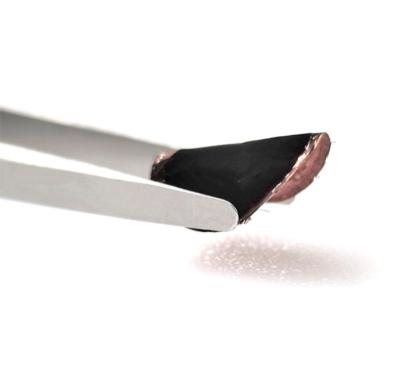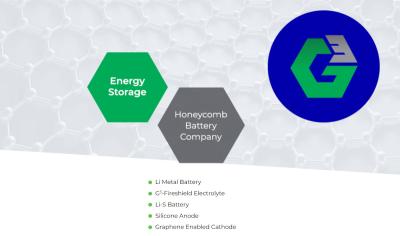The Graphene-Info newsletter ( February 21, 2023 )
posted on
Feb 21, 2023 10:47AM

Hydrothermal Graphite Deposit Ammenable for Commercial Graphene Applications

Cannot read this? View it online here
Graphite miner Northern Graphite announced that it has acquired an ownership interest in NeoGraf Solutions. Northern has a six month option to acquire an effective 50.1% voting interest and a 33.3% equity interest in NeoGraf and also has an option to increase its interest up to 100% at a later date.
NeoGraf, which is producing graphite and graphene materials, is one of Northern Graphite's largest customers. Northern Graphite says that this investment will enable Northern to integrate downstream into the manufacturing of graphite products for a number of high-growth markets including lithium ion batteries/EVs, fuel cells, graphene and nanomaterials, thermal management in consumer electronics, smart building products and fire retardants.
Haydale Graphene Industries has been awarded GBP258,547 (around USD$312,930) of funding by Innovate UK, the UK's innovation agency.
Haydale will use the funding to develop imaging techniques to characterize 2D materials, including graphene, to improve the compatibility and material selection processes. The Company explained that current methods for characterizing 2D materials for use in application are "time consuming." It noted that the program will have access to graphene in every format from raw material to finished product to develop new techniques not used before to image a range of nanomaterials.
Researchers from Carnegie Mellon University and MIT have demonstrated a 3D graphene-nanowire “sandwich” thermal interface that enables an ultralow thermal resistance of ∼0.24 mm2·K/W that is about 1 order of magnitude smaller than those of solders and several orders of magnitude lower than those of thermal greases, gels, and epoxies.

In addition, the new 3D graphene-nanowire “sandwich” thermal interface also boasts a low elastic and shear moduli of ∼1 MPa like polymers and foams. It exhibits excellent long-term reliability with >1000 cycles over a broad temperature range from −55 °C to 125 °C. This nanostructured thermal interface material can greatly benefit a variety of electronic systems and devices by allowing them to operate at lower temperatures or at the same temperature but with higher performance and higher power density.
Graphene Layers, a start-up that develops graphene-based solutions, and Rutgers EcoComplex “Clean Energy Innovation Center” and its WindIgnite “Offshore Wind Supply Chain Accelerator Program,” announced a partnership aimed at advancing their shared goals and objectives in the fields of clean energy generation, sustainable development, and integrating graphene technology for Offshore Wind (OSW) applications.
The partnership will focus on developing and commercializing graphene-based solutions that contribute to sustainable OSW supply chain development and help tackle some of the world’s most pressing environmental and societal challenges.
Scientists at the University of Wisconsin-Madison and Japan's National Institute for Materials Science have directly measured, for the first time at nanometer resolution, the fluid-like flow of electrons in graphene. The results could have applications in developing new, low-resistance materials, where electrical transport would be more efficient.
Graphene is a pure electrical conductor, making it an ideal material to study electron flow with very low resistance. Here, the researchers intentionally added impurities at known distances and found that electron flow changes from gas-like to fluid-like as temperatures rise.
Global Graphene Group (G3) announced that its subsidiary Honeycomb Battery is set to merge with a SPAC company (Nubia Brand International Corp.) in a deal worth $925 million. Nubia's current valuation is $700 million, and following the merger Honeycomb Battery will become a public company that trades at the NASDAQ (ticker: NUBI), with around $118 million USD in cash.

Honeycomb Battery developed several next-generation battery technologies, which include Li-Metal batteries, Li-S batteries, silicon anodes and graphene enhanced cathode materials. The company also developed a solid-state battery technology.
It was reported that industrial production of graphene recently commenced in Kerala, India, with the manufacturing beginning at Carborundum Universal Limited under the Murugappa Group.
Carborundum Universal has designed a special project, Grapheno, as part of the production of the nanomaterial. It had set up a lab and a plant spread over 12,000 sq ft at Kakkanad as part of the initiative. The company has reportedly signed agreements with Manchester University, IIT Chennai, the Cochin University of Science and Technology (Cusat) and others for industrial research.
Researchers from Ohio State University, The University of Texas at Dallas and Japan's National Institute for Materials Science have reported new evidence of how graphene, when twisted to a precise angle, can become a superconductor, moving electricity with no loss of energy.
The team announced their finding of the key role that quantum geometry plays in allowing this twisted graphene to become a superconductor.
Haydale has announced it has supplied audio equipment manufacturer Rega Research ("Rega") with its mechanically enhanced prepreg for improved sound quality on its latest turntable.
Using Haydale's HDPlasÒ technology, the graphene-enhanced prepreg has been applied into the manufacturing process for Rega's award-winning turntables. The mechanically enhanced prepreg has been combined into the stressed skin design of the plinth and bonded to the core material to increase the stiffness of the part by 11% reducing resonance and improving sound quality.
U.S-based graphene technology licensing company, Avadain, recently launched its second
crowdfunding round to raise up to $3.6 million on the Netcapital funding portal. This follows
raising over $600,000 in January from angel groups Harvard Business School Alumni Network and Keiretsu Forum, and $1.36 million in its first crowdfunding round last year. Avadain also attracted a $3.87 million government grants in 2022.
Avadain says it is the only company known to have a technology capable of manufacturing large (50-100 microns), thin (2-5 atomic layers), and nearly defect free graphene flakes cost-effectively in industrial volumes.